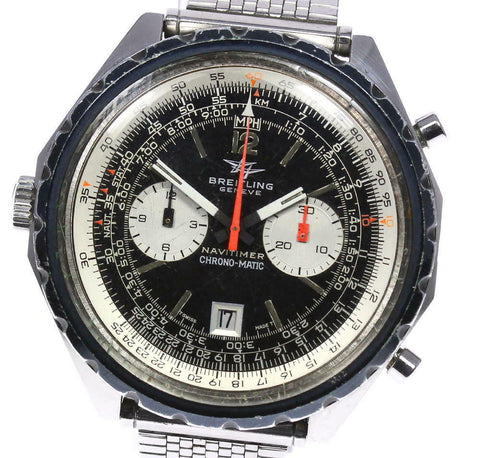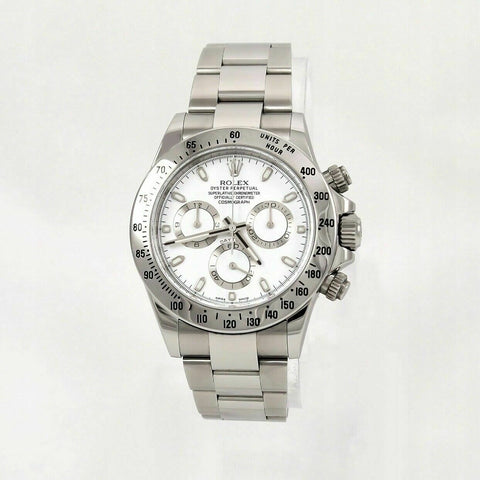Chronograph watch TAG Heuer Monaco A masterpiece revived after 30 years
In the movie "Le Mans" released in 1970, Steve McQueen wore a Heuer Monaco in the film.
The world's first automatic chronograph movement, the Chronomatic, was reissued in 1998 and 1999 and reintroduced to the public in the world's first square waterproof case.
The design was very dynamic and impressive.
Furthermore, this is a hotly anticipated model that embodies the strength that TAG Heuer has built up alongside motorsports.

The TAG Heuer Chronograph loved by actor McQueen
The history of TAG Heuer began in 1860 when Edouard Heuer founded Edouard Heuer Watchmakers in Saint-Islam, Switzerland.
In 1916, Edouard Heuer Watchmakers received a patent.
The patent is for a stopwatch called a "micrograph" that can measure time to 1/100th of a second.
It is perhaps fair to say that this technology was possible only because the company had already started producing chronographs in 1882.
Furthermore, the Micrograph was adopted as the official timekeeping clock at the Antwerp Olympics four years later, and the company continued to grow steadily as a manufacturer of timing equipment.
In 1969, the company collaborated with four major companies, Breitling, Büren Watch, and Dubois des Despraz, to create the world's first automatic chronograph movement, the Chronomatic.
And speaking of the blockbuster movie of 1970, "Le Mans," the actor Steve McQueen wore a Heuer Monaco equipped with a Chronomatic.
It is said that McQueen himself chose and wanted to wear this Heuer Monaco.
This model has a dynamic blue dial and a square, waterproof case reminiscent of motorsports.
Heuer was also involved in the world of motorsports at an early stage.
That is why, even after the launch of the Heuer Monaco, Heuer continued to actively expand its presence into the global sports scene.
In addition, Heuer is involved in the development of electronic timing devices for Formula 1 races.
The representative of this team is the person in charge of official F1 timekeeping for the Ferrari Motor Racing Team.
Heuer is the undisputed king of sports watches.
Chronomatic development story
The Chronomatic combines an automatic winding mechanism with a chronograph.
Because chronographs have very complicated mechanisms, it has been considered difficult to combine them with automatic winding.
But after a long planning period, it has finally become a reality.
This was made possible through joint development by four companies, including Heuer-Leonidas and Breitling.
In 1969, the world's first automatic chronograph movement finally became a reality.
The rigorous demands on chronographs and the race against time
Automatic chronographs are commonplace these days.
However, it should not be forgotten that there was fierce competition among manufacturers during the development of the chronograph.
In the 1950s, chronograph sales were sluggish.
This was why many manufacturers were eager to develop new chronographs.
Heuer was one of the manufacturers that was actively involved in development.
Heuer began collaborating with Breitling, Büren Watch (which would later merge with Hamilton), and Dubois des Despraz to develop automatic chronographs.
This is because every manufacturer felt that it would be difficult for a single company to tackle this development alone, both in terms of budget and technology.
However, naturally, these four companies working together on the joint development were not the only ones who had their eye on the development of this chronograph.
American companies and Japanese manufacturers posed a huge threat to the four companies.
In addition, there was information that the Swiss company Zenith had begun developing an automatic chronograph.
It was a race against time.
It was unclear which company would be the first to succeed in development.
And finally, on March 3, 1969, six months before Zenith released the El Primero.
Diameter 31 mm, thickness 7.7 mm.
Thus, the Caliber 11 “Chronomatic”, an automatic chronograph movement equipped with a micro-rotor, was born.
Each of the four companies involved in this joint development then released a watch equipped with this caliber.
Heuer released three models called the Carrera, Monaco, and Autavia.
However, the wave of quartz soon engulfed this movement.
Although the movement had been developed at enormous expense and over an incredibly long period of time, in 1979 Heuer decided to discontinue production of micro-rotor movements.
Models with the Chronomatic Chronograph
Each manufacturer involved in the development of the Chronomatic released their own model.
A distinctive feature of models equipped with Chronomatic is that the crown is placed on the left.
Hamilton

The model is called "FONTAINE BLEAU".
It has a two-tone dial.

"PAN-EUROP703".
Equipped with a tachymeter and rotating bezel.
Breitling

Breitling
"Transocean" with a blue dial.
It is equipped with a pulse meter.

Breitling
"Navitimer" equipped with Chronomatic.
This model is said to be a masterpiece of chronographs.

Breitling
Breitling's GMT model.
A Breitling model with a calendar and 24-hour display.
Daytona

Daytona
A chronograph named after the Daytona International Speedway.
This is the famous racing track in Daytona Beach, Florida.
Silverstone

Silverstone
A model released in 1974.
It has a distinctive square case.
The name is taken from the name of a racing circuit in the UK.
It uses a Chronomatic movement.
Autavia

Autavia
In 1933, they introduced the dashboard chronograph of the same name.
The name is a combination of automobile and aircraft.
This is where timing devices come into play.
Carrera

This model was named after the Carrera Pan American Mexico, a trans-Mexican race held in the 1950s.
It was released in 1963 with a tachymeter.

There is a border around the sub-dial.
It was released in 1999 as a reissue of the Heuer Carrera.
Sporty design.
Many chronographs are named after race tracks or circuits
Heuer began to make a full-scale entry into the motorsport world.
The catalyst for this was the development in 1933 of the world's first dashboard chronograph for racing cars, the Autavia.
Even after entering the market, Heuer would continue to support the world of motorsports in various ways.
Many of Heuer's models are named after racing circuits and races around the world.
Is G-Shock the ultimate chronograph model?
The model "Legrand" was released by Longines in 1879.
This was the first commercially available watch to combine a chronograph mechanism with a timing function.
After this, in line with the advances in mechanical watches, the chronograph continued to evolve, adding functions essential for measurement, such as totalizers, flyback, and split-seconds, as well as complex functions on the watch itself, such as moon phases, calendar functions, and GMT.
Finally, the two Swiss groups joined forces to develop the automatic chronograph in 1969.
These are the Caliber 11 from Heuer, Breitling, and Buren-Hamilton, and the El Primero from Zenith and Movado.
However, in the same year, Seiko released the world's first quartz wristwatch.
It was such an ironic turn of events.
Quartz has an unmatched ability in terms of precision.
The world of the 1970s was quickly engulfed in the wave of quartz.
The Swiss watch industry was hit hard by this.
But the quartz wave is unstoppable.
In no time at all, they released a watch with a digital LCD display, and then quickly added a 1/100th of a second stopwatch.
Although the automatic chronograph had just been born, it was unable to compete with the quartz wave, and production of these watches was gradually discontinued.
And finally, the G-Shock was released, with a shock-resistant structure that far exceeded the conventional standards for a watch.
The G-Shock was born in 1983.

G-Shock
The functions of the G-Shock were such that no matter how much mechanical chronographs improved their performance or how complex their mechanisms became, they could never hope to surpass them.
It seemed as though mechanical watches would disappear altogether, but in the late 1980s, mechanical watches began to revive.
In this era, new values are born.
As a result, mechanical and quartz watches could coexist, making it possible for the two to compete on the same field.
A chronograph is a watch with a stopwatch function.
So, does that mean that almost all digital watches that use quartz movements can be considered chronographs?
G-Shock is packed with a variety of functions.
It was packed with a wide variety of functions, including a calendar, 1/100 second stopwatch, 24 hour display, GMT, alarm, countdown timer, phone book, thermometer, barometer, and altimeter.
What's more, all models are shock-resistant and waterproof to a depth of 200m.
Just take a look at this feature.
It's no wonder that G-Shock is considered the ultimate chronograph.
However, it is actually a mechanical chronograph and a G-Shock.
No one has to worry about which one to buy.
It is because they are completely different things that it is nonsense to compare them.
What's important is need and value.
There are attractive aspects to both mechanical chronographs and G-Shocks.
If you enjoy baseball, golf, skiing, etc., a G-Shock with its superior shock and water resistance would be preferable to a mechanical chronograph.
However, there are probably many people who wear mechanical chronographs in official situations.
Wear what is appropriate for each situation.
It may be self-satisfaction, but isn't that the most desirable thing?





